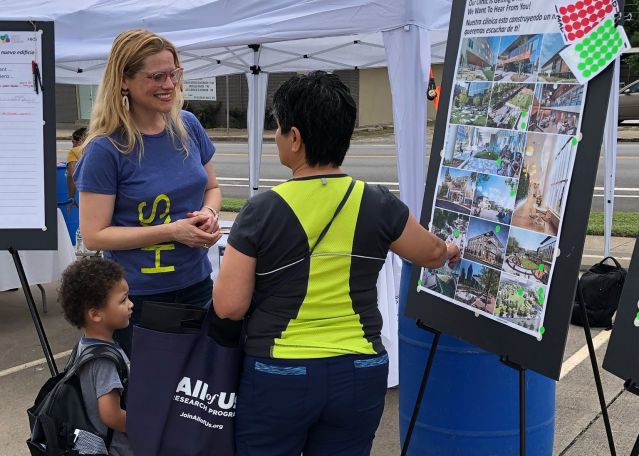Creativity
How Social Design Can Heal Our World
Building communities and cities with people in mind.
Posted January 20, 2023 Reviewed by Ekua Hagan
Key points
- Social designers act in service, facilitating inclusive design processes that weave together many inputs around a shared vision.
- Currently, few practices use a true social design approach to create the spaces where people live—streets, urban districts, and neighborhoods.
- All design leads to social impacts—personal, community, global—and the process of creation elevates or deteriorates social structures.
As a society, we face some of the most difficult challenges of our time—rampant inequality, extreme polarization, social disconnection, rising mental health challenges, and climate catastrophes. For many of us, these overlapping crises feel nothing short of an existential threat. But instead, what if we saw them as the invitation they are: an imperative to design a more socially responsible, sustainable, and kind world where everyone and everything can thrive? In other words, a socially supportive ecosystem?
A social design approach is essential in doing just that.
Social design vs. traditional design
Traditional design approaches have tended to look myopically at paying clients’ singular needs. Need a larger recreational space for your employees? You’ve got it. Create a grand entry? No problem. But rarely have architects been held accountable or even encouraged to look at their impact on the broader social and physical ecosystems their designs are impacting.
Social design helps everyone in the process quite literally think outside the box—recognizing and designing for positive social impacts. In legendary psychologist Robert Sommer’s 1983 book, he defines social design as a “liaison between design and the behavioral science” to humanize the process of planning buildings, communities, and cities, where the end user (e.g., community member, building occupant) values’ are brought into the planning process and inform the design.
Clearly, serving the needs of the people who pay the bills and sign the contracts is essential for economic survival. However, caring for the ultimate users of the buildings and surrounding communities is “critical also for the moral justification of the profession” (Sommer, 1983).
"A useful way of thinking about social design... [can be] as a kind of architectural practice that reimagines and reengineers an existing social structure to be more resilient and just, more conducive to keeping those living within it healthy”
- Cheryl Heller, The Intergalactic Design Guide
Social design gives language to an idea that has guided my professional practice since my first forays into architecture - The purpose of design is to leave the world better than when you found it, supporting healthy people and communities, and a vision for social progress.

What social design looks like
Social design is fundamentally inclusive. It puts the designer in the position of the chief listener—the facilitator—not the expert on the pedestal we often pretend to be. Human beings of all backgrounds, experiences, identities, and perspectives come together to create innovation—not for innovation’s sake, but rather for the benefit of society as a whole.
In practice, social design puts the designer in a position to serve as a facilitator of an inclusive design process—one that weaves together client needs, best design practices, community stakeholder input, and evidence-based design strategies aligning to desired outcomes. One of the primary goals of this process is to understand the underlying values and goals that help inform design intent and understand the unique feedback from stakeholders about what that design means to them.
For example, if a community clinic wants to create a building that exemplified social design, we would start by bringing the community together to listen to their needs. From there, let’s say they want a place to host community events and pre-natal visits but also dance classes that invite in new members of the community.
Then, as designers working hand-in-hand with the community, we create a room that can work for all of these—perhaps allowing it to be bifurcated into two smaller spaces or one large one to host community events. We also make sure that it is visible to the people on the street so that they feel welcome to come in and join the action. Here we see as much, if not more, emphasis on how the design is accomplished as what the ultimate design is.
The impact of social design
Social design may sound like common sense, but it is infrequently how the spaces where we spend our lives—streets, urban districts, and neighborhoods—are designed. If we always used a social design approach, we would likely live in a very different world—one with less struggle, division, and inequity.
"Social design is a creative practice dedicated to understanding social problems and supporting positive social change. Social design creates opportunities that shift relationships between people and people, and people and institutions, to support positive social change."
If we want to address what ails us, the design of our environments is a critical part of that. Apartment buildings can be designed to lift up the surrounding communities or turn their backs on them. Businesses can show they value their employees by creating shared spaces of welcome and meeting human-centered design principles, or they can ignore their staff, focusing only on efficiency, and find that people feel their lack of priority to their employer. Cities and neighborhoods can invest in public/private shared spaces with support from people and nature, or they can turn their backs on what is outside and focus on economic expediency at the cost of long-term human health and well-being, as many cities are doing today.
All design is social. All architecture leads to social impacts—personal, community, and global. The process of creation elevates or deteriorates social structures, so we too should commit ourselves to the necessary work of purposeful social design.
References
Center for Social Design. MICA. (2022). Retrieved January 1, 2023, from https://www.mica.edu/research/center-for-social-design/.
Heller, C. (2018). The Intergalactic Design Guide: Harnessing the Creative Potential of Social Design. Washington, DC: Island Press.
Sommer, R. (1983). Social Design: Creating Buildings with People in Mind. Englewood Cliffs, New Jersey: Prentice-Hall




